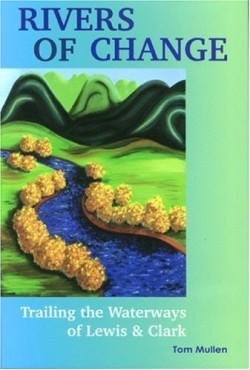Rivers of Change
Trailing the Waterways of Lewis and Clark
When the author returned to America after working abroad for twelve years, he chose an unconventional way to become reacquainted with his native country: traveling solo the river routes taken by Lewis and Clark nearly two hundred years earlier.
A water resource consultant by trade, Mullen took five months-in a small truck-camper combination he nicknamed “Six Pac”-and visited nine states and British Columbia, meeting an assortment of characters who live and work on the Missouri, Yellowstone, and Columbia Rivers. With a master’s degree in Water Resource Systems Management, Mullen has worked in Africa, Asia, Europe, the Middle East, and Latin America, and has previously published articles on water-related issues.
On this journey, starting in America’s heartland and focusing initially on the flood of 1993, the author provides interesting historical background on each area he travels through. He devotes a section to the steamboat era, telling of the ill-fated Arabia, the 400-ton boat that sank in four and a half feet of water in 1856. Excavators found its wreckage in 1988-forty feet below a Missouri cornfield, hundreds of yards from the nearest riverbank. Mullen visits the Kansas City museum built to display its artifacts.
The author recounts the taming of the meandering and sometimes menacing Missouri River, describing his research and opportune encounters with individuals like eighty-one-year-old Jim Nower, who opines that flooding on a big scale didn’t occur until after the government’s massive 1946 river damming project.
Mullen and readers learn about how nest sites of the once nearly extinct piping plovers are now carefully managed by Corps of Engineers personnel. He explores the history of the region’s many Native tribes, told by unique sources such as the Nebraska man who fills him in on Omaha tribal history.
This book is filled with interesting facts, a good amount of history, some bits of trivia, and the thoughts and observations of one man as he follows the path of two great early explorers. His command of the language is fun and inviting-for example, the river “no longer runs free, wild, and vagrant as a happy tramp.” He observes a woman at a laundromat in North Dakota: she “was making the transition from washer to dryer and from youth to middle age at the same time.”
At the end of his trip, Mullen makes a thoughtful and probably very personal observation: “What matters is not where any river carries us, but why we choose to journey along its course.”
Reviewed by
Robin Farrell Edmunds
Disclosure: This article is not an endorsement, but a review. The publisher of this book provided free copies of the book to have their book reviewed by a professional reviewer. No fee was paid by the publisher for this review. Foreword Reviews only recommends books that we love. Foreword Magazine, Inc. is disclosing this in accordance with the Federal Trade Commission’s 16 CFR, Part 255.

